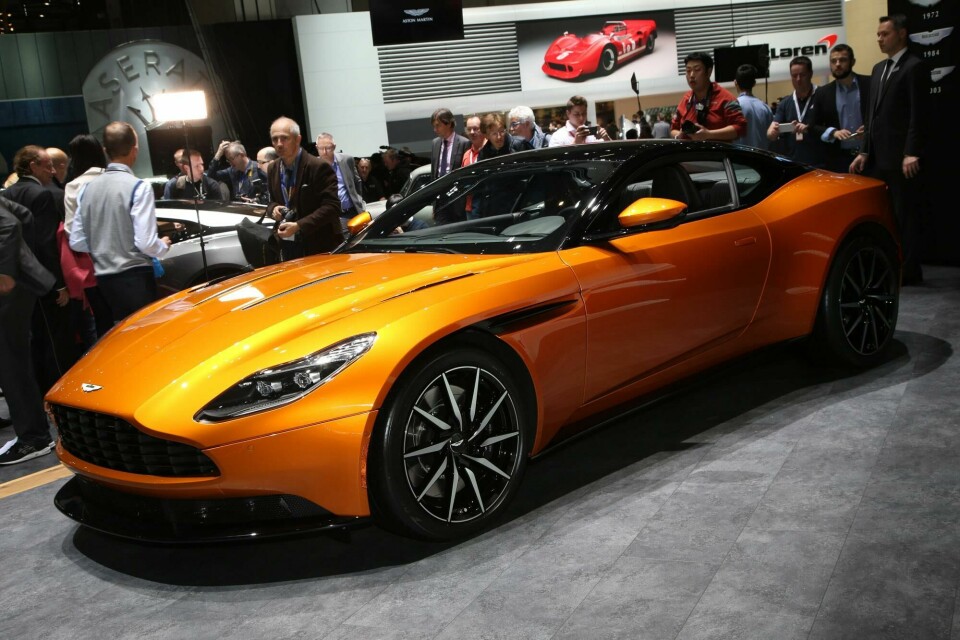
Geneva 2016: Aston Martin DB11 looks to the near-future
Contemporary graphics show confidence, but is it justified?
The Aston Martin DB9 made its motor show debut in 2003. Simple, beautifully executed surfaces, excellent proportions and a suitably opulent interior gave the car a timeless, understated grace. As a result, the car has stood the test of the past 13 years; Aston’s volumes mean all-new cars come along half as often as its rivals at present.

Its successor seems to follow some of that original basic recipe, with good proportions and a basic sense of ‘rightness’ that are essential to the Aston experience.

But there are also some new additions that are proving much harder to digest. Whereas the DB9 was all iron fist in velvet glove, the treatment of the surfaces around the nose and hood are much more brutal, of overtly stereotypically masculine, perhaps to match the extra thrust of the new turbo engine.

The vent behind the front wheel to extract high-pressure air at speed is also contentious, spoiling the line of the wheelarch and, in combination with the black rockers on the show car, makes it look strangely high-riding, rather than low-slung, making it spec-sensitive in a way the DB9 wasn’t.

There are still some subtler details, including the slotted vent in the rear deck to create downforce without adding a rear spoiler, and the new lamps are much more modern thanks to all-LED technology. However, the attention-seeking floating A-to-C-pillar surface just looks like a step to far, even when it’s colour keyed to matched the roof.

Inside, it’s a very familiar story to the DB9, and that’s not necessarily a positive thing here. Looking rather dated, and with last-generation switchgear on the centre stack provided by Daimler, rather than with various parts of the Ford empire with the DB9, it’s upmarket in exactly the same way that the old car was – it certainly doesn’t feel like a cabin designed to last until 2029.

And that’s the question for Aston this time. The DB11 is designed like a car that won’t have to weather the effects of time like its predecessor. Only its success will ensure that can happen, and our first acquaintance with the new car means we’re not quite convinced it’s everything buyers will expect in 2016, let alone in 13 years time.



